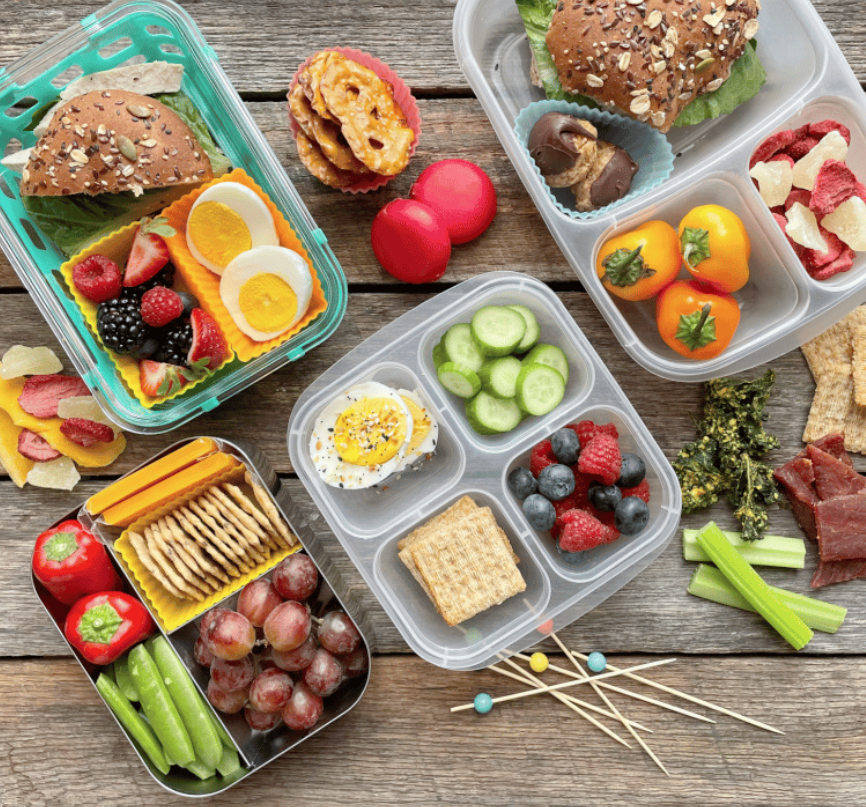From infancy, the growth of children
in proportion to their age is directly proportional to nutrition. Nutritionist
and Dietitian listed five important healthy nutrition suggestions for mothers
that will be effective for children:
1- Never Skip Breakfast
Having a regular breakfast is
critical, especially for school-age children. After starving all night long,
our body and brain need energy to start the day. If breakfast is not eaten,
distraction, fatigue, headache and decrease in mental performance occur. For
this reason, starting the day with an adequate and balanced breakfast is
extremely important in increasing the success of students in school.
Children who skip breakfast become more tired,
irritable and impatient later on. On the other hand, children who regularly
have breakfast in the morning, on the other hand, are more energetic at school,
more distant from irritable behaviors and in a harmonious state. Studies have
shown that children who eat breakfast always score higher on math tests than
those who don't. For breakfast, you can add donuts and pastries, which can be
made with healthy formulas at home, to provide variety to foods such as milk,
eggs, olives, tomatoes, cucumbers, and figs.
2- Healthy home-made donuts and pastries
Prepared with healthy ingredients at
home and consumed in the right amounts, pastries are rich in vitamins.
According to the current nutritional analysis, when the average daily needs of
adult women and men are considered; 12% of protein, 16% of vitamin E, 7% of
vitamin B3 (niacin), 5% of Biotin.
We can prepare a different breakfast
alternative or snack with a healthy homemade pastry in order to spice up the
tables for our children. The pastry will be a healthy ingredient with cold cuts
and 1 fruit. You can also make use of healthy ingredients such as whole wheat
flour, oats and fresh herbs to prepare the buns even more healthy.
3- Pay attention to celiac disease in children
If your children are allergic to
gluten protein found in wheat, barley, rye and oats and have to live on a
gluten-free diet for the rest of their lives, you should be much more careful.
should be revealed.
For children with celiac disease, who
must consciously consume everything they eat and drink, families should learn
the necessary vitamin and mineral intake well. For this, families should seek
help from doctors, dietitians and associations. For example, excess starch
intake in flours produced as gluten-free flour should be avoided. They should
follow a gluten-free diet of more beneficial grains. They should never
compromise on meat, vegetables and fruit.
4- Healthy snacks in lunch
It is important to prepare the
lunchboxes of school-age children in a way that does not neglect the health as
well as the taste. Because when lunch boxes are prepared in this way, children
tend to be less likely to gravitate towards the wrong snacks or high-calorie
foods such as chips and candy. In addition to homemade cakes, donuts and
pastries, healthy sandwiches with cheese, fish and greens veggies prepared with
high-fiber bread, fresh fruit/vegetable juice, milk, yogurt, and fruits are in
lunchboxes of school-age children. are essential foods. In addition, dried
fruits, almonds or walnuts, milk or yogurt mixes made with fresh or dried fruits,
fruit pulp, carrot and cucumber sticks can be added to these bags for children
to snack on.
The most practical and healthy 5
different lunchbox ideas are:
Snack 1:
• 1 glass of milk
• Donuts, sandwich with cocoa spread
Snack 2:
• Sandwich with cheese, fish and
seasonal green veggies
• Apple + parsley juice
Snack 3:
• Homemade donuts
• Milkshakes
Snack 4:
• Freshly squeezed orange juice
Snack 5:
• Mini sandwiches with cream cheese
• Tomato juice
5- A source of vitamins
There are 5 important benefits that
come from whole grain bread. First of all, it keeps blood sugar in balance with
its complex carbohydrates and reduces sweet cravings. Whole-grain bread, which
is a source of vitamins such as fruits and vegetables with its B1, B6 and
niacin content, is protective against digestive system cancers, provides weight
control and prevents obesity by giving a feeling of satiety, lowers blood
cholesterol and prevents hypertension.
It is not possible to get the vitamins
and minerals that are unique to whole grain bread from other foods. The
benefits of rye bread with plenty of fiber, which contains vitamins B2, B6, B12
and C, iron, calcium, niacin, folic acid and zinc, do not end with counting: A
person who takes 300 g of bread will consume 30-36 percent of the energy he
needs daily, and 39 percent of the protein. It provides 42 percent of it, 12-48
percent of iron, 9-57 percent of calcium, 27-63 percent of thiamine, 15-27
percent of riboflavin, 15-27 percent of niacin. For example, selenium, which we
cannot get much with nutrition, is quite high in bread made with a high fiber
bread mix. Selenium, together with vitamin E as an antioxidant, helps prevent
cancer, heart diseases and other health problems by protecting your cells
against oxidation (rusting).
So monitoring the healthy diet you can have a healthy life.
#shapetolife
 Reviewed by Shape to Life
on
May 17, 2023
Rating:
Reviewed by Shape to Life
on
May 17, 2023
Rating:









No comments: